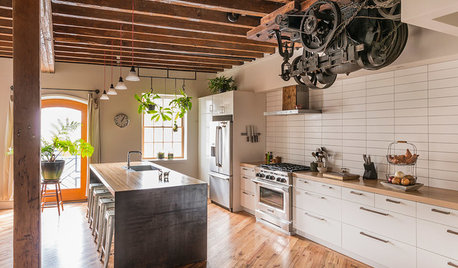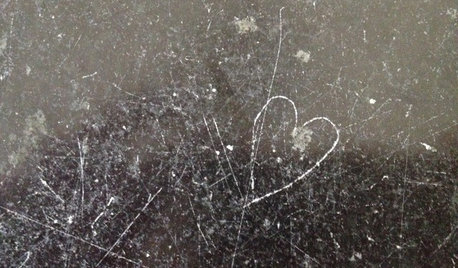Spray foam insulation
Debbie Downer
11 years ago
Related Stories

MATERIALSInsulation Basics: What to Know About Spray Foam
Learn what exactly spray foam is, the pros and cons of using it and why you shouldn’t mess around with installation
Full Story
GREEN BUILDINGEcofriendly Cool: Insulate With Wool, Cork, Old Denim and More
Learn about the pros and cons of healthier alternatives to fiberglass and foam, and when to consider an insulation switch
Full Story
GREEN BUILDINGInsulation Basics: Heat, R-Value and the Building Envelope
Learn how heat moves through a home and the materials that can stop it, to make sure your insulation is as effective as you think
Full Story
REMODELING GUIDESCool Your House (and Costs) With the Right Insulation
Insulation offers one of the best paybacks on your investment in your house. Here are some types to discuss with your contractor
Full Story
GREEN BUILDINGInsulation Basics: Designing for Temperature Extremes in Any Season
Stay comfy during unpredictable weather — and prevent unexpected bills — by efficiently insulating and shading your home
Full Story
GREEN BUILDINGInsulation Basics: Natural and Recycled Materials
Consider sheep’s wool, denim, cork, cellulose and more for an ecofriendly insulation choice
Full Story
WINDOW TREATMENTSEasy Green: 9 Low-Cost Ways to Insulate Windows and Doors
Block drafts to boost both warmth and energy savings with these inexpensive but effective insulating strategies
Full Story
KNOW YOUR HOUSEKnow Your House: The Basics of Insulated Concrete Form Construction
Get peace and quiet inside and energy efficiency all around with this heavy-duty alternative to wood-frame construction
Full Story
GREEN BUILDINGHouzz Tour: Pickle Factory Now an Energy-Wise Live-Work Space
A charming but poorly insulated 1880s Philadelphia commercial building becomes a spacious energy-efficient home and studio
Full Story
LIFEYou Said It: ‘We Call It Character’
Design advice, inspiration and observations that struck a chord this week on Houzz
Full StoryMore Discussions










danvirsse
worthy
Related Professionals
North Versailles Kitchen & Bathroom Designers · Adelphi Kitchen & Bathroom Remodelers · Holden Kitchen & Bathroom Remodelers · Bay Shore Kitchen & Bathroom Remodelers · Honolulu Kitchen & Bathroom Remodelers · League City Kitchen & Bathroom Remodelers · Lincoln Kitchen & Bathroom Remodelers · Tulsa Kitchen & Bathroom Remodelers · Vashon Kitchen & Bathroom Remodelers · Wilmington Island Kitchen & Bathroom Remodelers · Arvada Architects & Building Designers · Fayetteville Architects & Building Designers · Los Alamitos Architects & Building Designers · Palmer Architects & Building Designers · Troutdale Architects & Building DesignersCircus Peanut
energy_rater_la
worthy
energy_rater_la
Debbie DownerOriginal Author
energy_rater_la
Debbie DownerOriginal Author
energy_rater_la
Debbie DownerOriginal Author
energy_rater_la